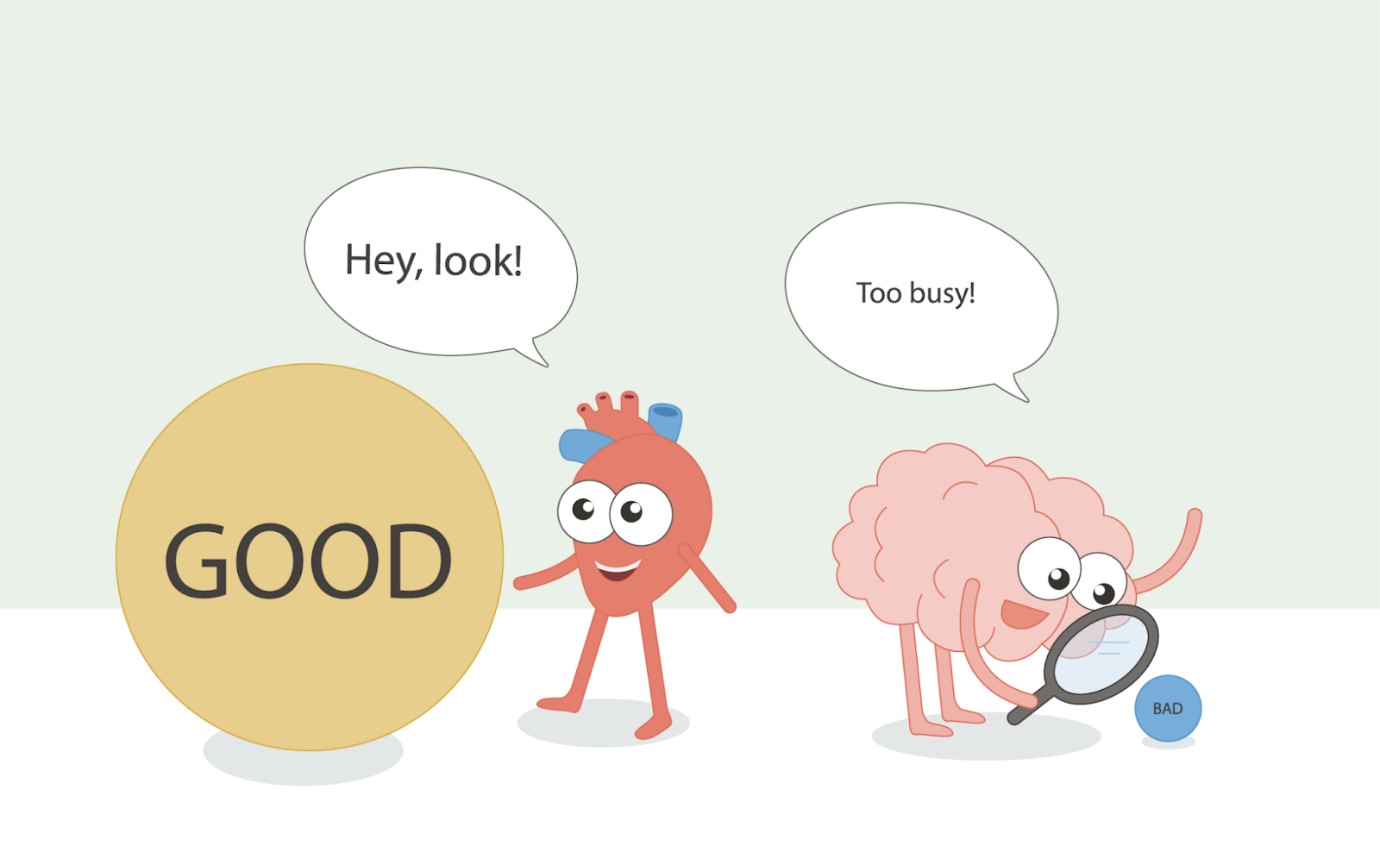
Overcoming Negativity Bias: Best Strategies for Teachers to Stay Positive
24th February 2025
Suppose you are wrapping up a long, busy day at school with stories to tell and victories to celebrate. Yet, when asked about your day, your mind stubbornly fixates on the one mishap that happened rather than the abundance of positive interactions. Sounds familiar? Welcome to the world of negativity bias!
This psychological inclination is like a magnet for negativity, often overshadowing the countless moments of success and joy that occur throughout the day. As a teacher, recognizing negativity bias is crucial, as it can significantly distort your perspective in the classroom.
By understanding this bias and by pursuing courses like Counselling Courses for Teachers, educators can better navigate challenges and maintain a balanced view that enhances both teaching impact and classroom dynamics.
Let's dive into how negativity bias affects teachers and discover ways to keep it in check for a healthier, happier educational atmosphere.
So, without any further delay, let’s get started.
Understanding Negativity Bias

Negativity bias is a natural tendency where our brains focus more on negative stimuli, events, or experiences than positive ones. According to many psychosocial specialists, this bias leads us to register negative experiences more readily and to dwell on them more persistently.
Think about it- On any given day, a negative comment or mishap might overshadow a hundred good interactions. It's as if our minds have a built-in highlighter set to neon yellow for negatives!
Influence of Negativity Bias on Teachers
Let’s get to know how negative bias affects teacher's overall perspective:
- Common Negative Incidents Overvalued by Teachers
In the teaching world, negativity bias can lead to an overemphasis on disruptive incidents or challenges in the classroom. It's common for teachers to become preoccupied with tardy students, cheating incidents, or parental complaints rather than appreciating punctual students or hard-working learners. These negative incidents, albeit few, often demand overwhelming attention and emotional energy, overshadowing countless positive classroom moments.
- Personal Stories and Experiences
Personal stories from seasoned educators highlight how negativity bias manifests in everyday teaching experiences. Many recall situations where a single negative interaction tainted their perception of an otherwise successful day. Reflecting on personal experiences can not only make this concept relatable but also encourage educators to recognize similar patterns in their professional journeys.
- The Disproportionate Focus on Negative Feedback
Negative feedback, whether from students, parents, or colleagues, tends to leave a stronger imprint on teachers’ minds compared to positive reinforcements. While constructive criticism is invaluable for growth, the tendency to focus more on negative feedback can distort one’s perception of their capabilities and achievements.
Teachers might find themselves dwelling on a single negative comment instead of celebrating numerous well-done lessons and positive student interactions. Recognizing and rebalancing this focus is essential for a more holistic and rewarding teaching experience.
Strategies to Overcome Negativity Bias
Now, let’s get to learn some of the best strategies to overcome negative bias for teachers:
- Utilizing Sticky Notes for Positive Reinforcement
Sticky notes to the rescue! By jotting down small wins and positive moments on sticky notes, teachers can create a visual reminder of the good things happening throughout the day. Keep these notes handy to revisit whenever negativity creeps in. This simple yet powerful tool can act as an immediate counterbalance, offering a tangible way to recall joyful instances during challenging times.
- Incorporating Margin Notes for Balanced Reflection
Margin notes in your lesson plans can serve as a great tool for reflection. Mark highs and lows as they occur, capturing both successes and areas for growth. This habit not only helps in recognizing patterns but also promotes a balanced perspective when reviewing past lessons. By being able to identify trigger points and joyous victories, teachers can develop strategies that replicate the positive and neutralize the negative.
- Journaling as a Tool for Positive Focus
Journaling is the ticket to positive focus! Teachers can use journaling to maintain a broader perspective on their experiences. Regular journaling encourages thoughtful reflection and helps to shift focus from occasional setbacks to the continuous stream of success stories in the classroom. However, it's crucial to avoid falling into a negativity spiral by ensuring entries maintain a balanced approach, highlighting positive interactions as much as challenges.
- Collaborative With Fellow Teachers
Why tackle negativity alone when we can bring others into the mix? Collaborative efforts can enhance a teacher's ability to overcome negativity bias by fostering a supportive environment.
Joining forces with fellow teachers can be a game-changer! Peer partnerships allow educators to share experiences, offering fresh perspectives and mutual support.
These partnerships can help diffuse negativity by balancing discussions with positive insights and solutions. So, let's turn those hallway chats into opportunities for shared growth and positivity, harnessing collective energy to focus on the good.
Final Thoughts
Negativity bias is a powerful force that can skew a teacher's perspective, overshadowing the incredible work they do every day. Recognizing this bias is the first step in overcoming it. By taking all of the above-mentioned proactive measures, teachers can recalibrate their focus toward more uplifting experiences.
Remember, the goal isn't to ignore challenges but to give positive outcomes the spotlight they deserve. By consciously working to highlight the positives and by pursuing courses like the Online Diploma in Counselling Course for Teachers, every educator can maintain a healthier, more balanced outlook, ultimately benefiting themselves and their students.
Embrace the joy of teaching, with all its highs and occasional lows, and foster a more positive and effective classroom dynamic.
We believe education should be accessible to everyone. That’s why we don’t charge for our blogs. Find the right course that will help you in your career with us, contact us at +6621056101. You can mail us at act@asiancollegeofteachers.com
Written By : Laura Taylor




